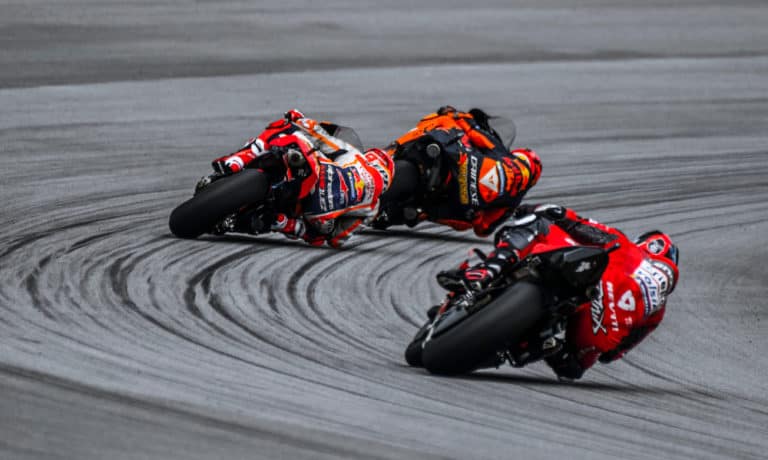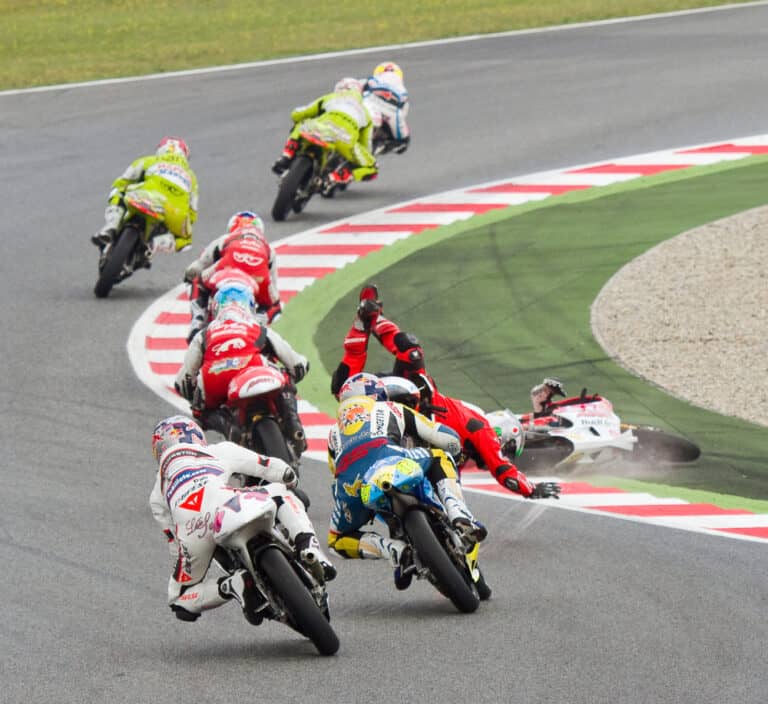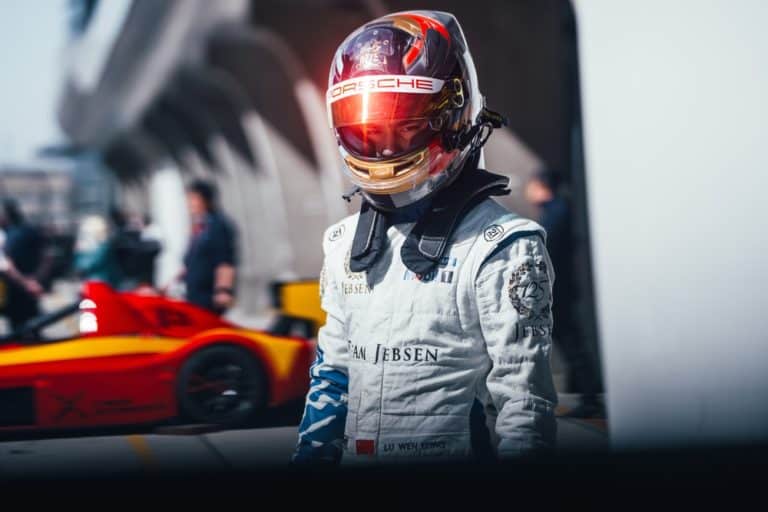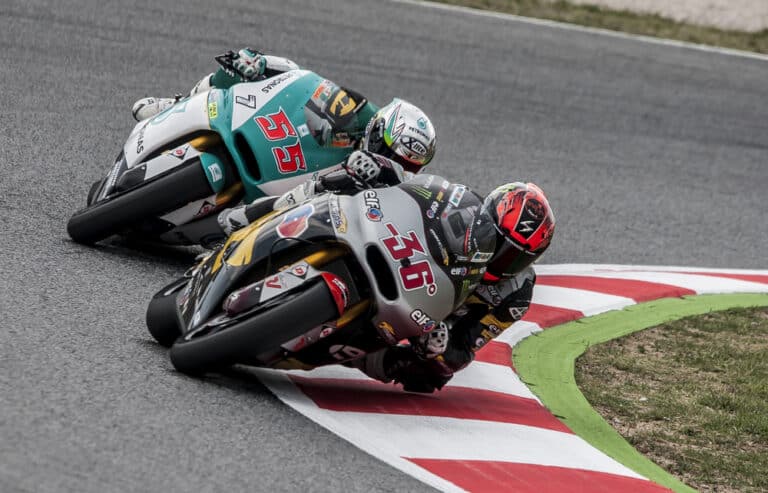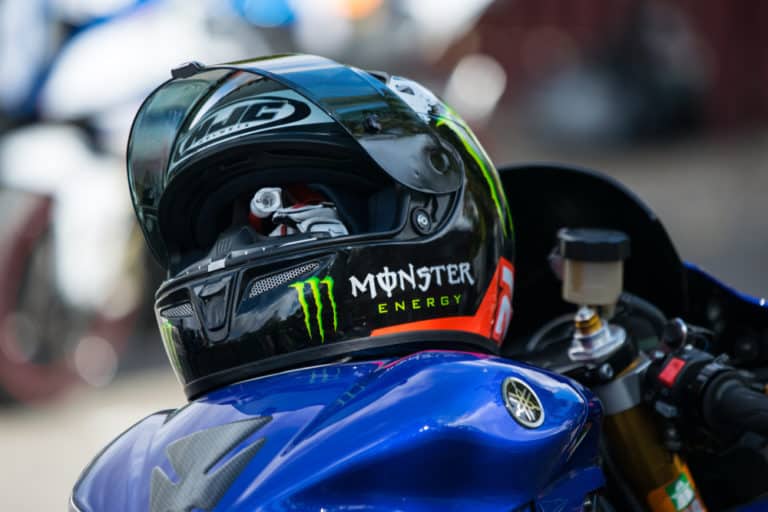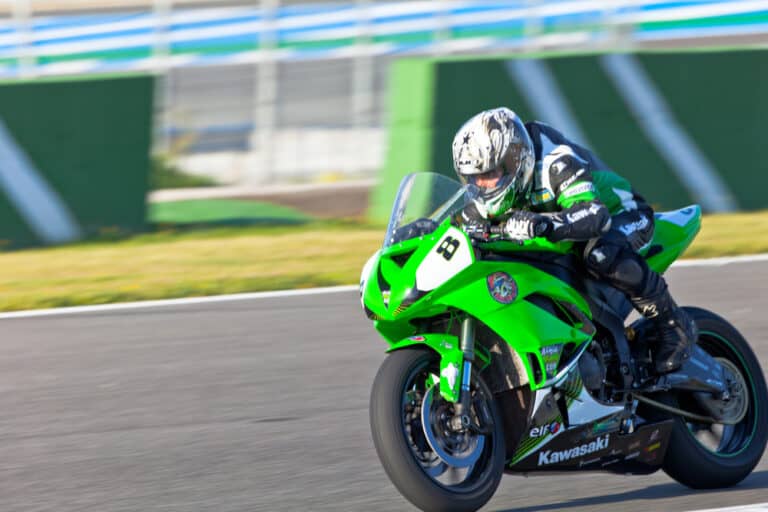Before 2016 the MotoGP teams used individual, which featured a range of interventions, including traction control, anti-wheelie, engine-braking control, and launch control. While it enabled the riders to go faster and improve lap times, the bikers complained that the boxes were doing all the work!
The latest MotoGP bike series have bikes fitted with a standardized IMU (Inertial Measurement Unit) installed on all bikes. This unit is designed to prevent bikes from skidding out of control, particularly when going around fast corners, and to prevent the bike from wheeling.
Since 2016 MotoGP bikes have been fitted with unified traction and anti-wheelie system, which overcomes the problem of the previous systems while helping the rider achieve faster tome, more safely.
MotoGP Bikes Have An IMU (Inertial Measurement Unit)
For the 2016 season, the rights holder of MotoGP, DORNA, pulled off a master stroke in that they persuaded all of the manufacturers to adopt a new, unified Traction Control system.
The system has two protections.
- Traction control
- Anti-wheelie system
The Traction Control System
A bikes tire performance is affected by:
- The amount of tire wear.
- The speeds at which the bike travels.
- The diameter, angle of bank, and track surface at each corner.
- The ambient temperature affects the track’s temperature.
The traction control system balances these factors and enables the rider to achieve the most consistent and high-speed circuits possible.
The traction control system used on MotoGP bikes works by keeping the wheels in contact with the track’s surface, improving the tire’s grip.
It does this by:
- Detecting the bike’s lean angle using the IMU (Inertial Measurement Unit).
- The gear which the bike is in.
- Detecting the amount of wheel spin on both of the wheels.
The IMU consists of a gyroscope and several accelerometers that measure the bike’s attitude on six planes.
- A horizontal plane that measures the front-to-back acceleration.
- A lateral plane measures the sideways acceleration.
- The vertical plane measures the up and down acceleration of the bike.
- The angle of horizontal (front-back) rotation (The vertical movement of the front wheel is compared to the back)
- The lateral rolling rotation (how fast the bike is rolling on the lateral plane)
- The yaw acceleration (how fast the front wheel or back wheel are moving laterally to each other)
With the number of measurements constantly taken every microsecond, the system can modify the bike’s ride with infinitesimally small adjustments.
The system does not eliminate all tire slipping or skidding; instead, it keeps it within a preformatted range defined by the engineers and the rider.
If the rear wheel (drive wheel) starts losing traction, it will begin to spin faster. When the difference in rotational speed between the rear and front wheel exceeds 12% (personalized by the driver), the system activates.
In a corner, if the back wheel speed exceeds the front by more than this margin, it will force the back of the bike wide and create oversteer, leading to a loss of control.
It does this in a very controlled way because if there were a sudden, abrupt intervention, it would cause the bike to over-respond, which may also cause loss of control.
When this happens, the system communicates with the bike ECU (Engine Control Unit), which reduces the amount of torque on the back wheel by one of the following interventions.
- It will close off one of the cylinders, which reduces the total power available.
- Closes the electronic throttle reducing the available power.
- It retards the ignition timing, changing the time at which the spark plugs fire, which reduces the power output and makes it “softer.”
The way the intervention happens is critical; if it were too sudden, the back would immediately regain traction causing the bike to regain grip and the rider to lose control suddenly.
Although the system is common to all teams, the engineers are allowed to personalize it for each rider’s preferences and the bike’s characteristics.
In addition to this, the teams also adjust the settings for each track because they all have unique characteristics.
The Anti-Wheelie System
The traction control system is designed to improve performance and safety, while the Anti-Wheelie System has a single focus: to improve performance.
When a rider changes the bike’s balance by increasing the torque on the rear wheel, the angular momentum is changed, which removes the weight from the front wheel, which lifts up in what is called a wheelie (also known as a wheel stand).
While it is great to look at, it is inefficient in accelerating the motorbike because some of the torque that should be applied to make the bike go forwards is redirected to lifting the front wheel.
The system installed on all MotoGP bikes controls the torque applied to the back wheel.
The forces which are measured before the system is enabled are as follows.
The Wheel Relative Speed
The speed of the rear wheel is compared to the speed of the front wheel. As the front of the bike lifts, the front wheel will slow down, and the rear wheel will speed up.
When this happens, the system will intervene.
The Suspension Has A Sensor
The front shock absorbers have sensors that measure the height of extension.
This sensor can determine the position of the front shock absorber (fork), so when it is fully extended, it is a good indication that the front wheel has left the ground.
When this condition is in place, the system will intervene and communicates with the Engine Control Unit (ECU)..
The system works similarly to the traction control in that to stop the wheelie, the ECU will carry out one of the following actions.
- It will reduce the torque applied to the rear wheel by closing off one of the cylinders.
- It reduces the throttle setting.
- It retards the ignition timing, changing the point in the ignition sequence when the spark plugs fire.
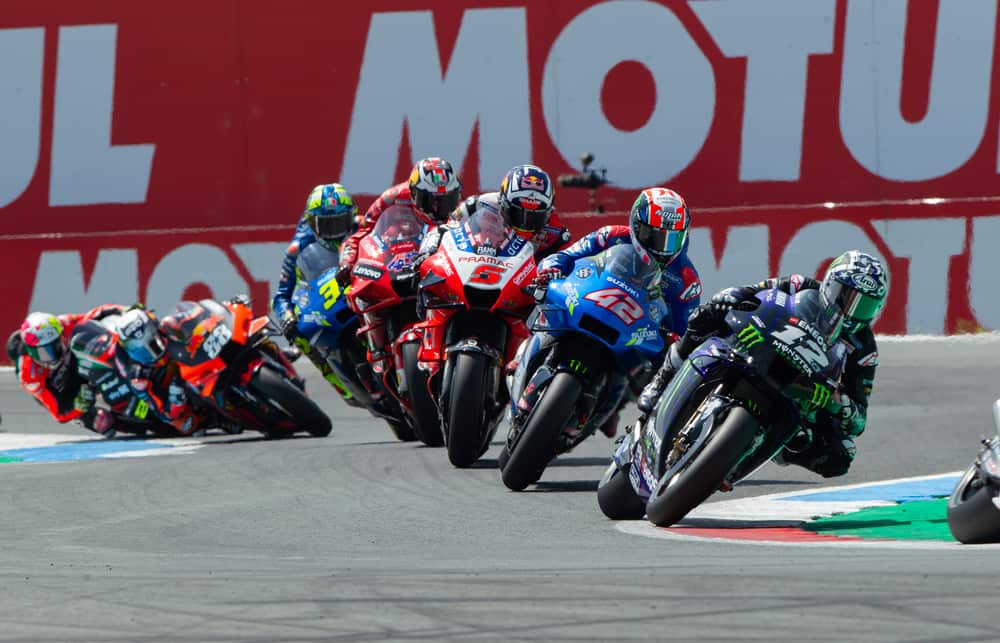
Are MotoGP Bikes Easy To Ride?
There is a meme available that asks the question.
“Can anyone ride a MotoGP?”
“Every amateur who rides a MotoGP bike has two experiences.
“The first is a high-speed exciting ride” – shows a picture of a MotoGP bike traveling very fast.
“The second is very slow” – shows a picture of the rider being loaded into an ambulance.
The systems are not designed to make the rider a robot who only pushes buttons.
The electronics on a MotoGP have not made the bikes any easier to ride. Instead, they allow the rider to push the bike to more extreme limits and achieve faster lap times.
Conclusion
In MotoGP’s constant quest to balance the rider field’s competitiveness against the riders’ safety, they have introduced the IMU (Inertial Measurement Unit) as standard fitment on all MotoGP bikes.
This special equipment has increased the lap times the riders achieve and contributed substantially to riders’ safety.

